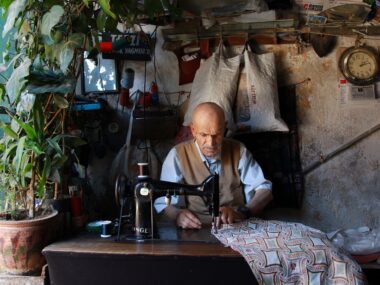How to Get a Tailoring Job in Canada as a Foreigner
Looking for a tailoring job in Canada but not sure where to start? Maybe you’ve heard stories of people landing jobs abroad and wondered, “Why not me?” If you’re skilled with a needle and thread, your talent could be your ticket to an exciting new life in Canada.
Canada has a growing demand for skilled trades, and tailoring is one of those hidden gems. In this guide, we’ll walk you through every stitch of the journey—no jargon, no fluff—just the essentials you need to land that dream job in the Great White North.
Table of Contents
| Sr# | Headings |
|---|---|
| 1 | Why Canada Needs Tailors |
| 2 | Benefits of Tailoring Jobs in Canada for Foreigners |
| 3 | Are You Qualified? Essential Tailoring Skills |
| 4 | Types of Tailoring Jobs Available in Canada |
| 5 | Where to Find Tailoring Job Openings in Canada |
| 6 | How to Apply for Tailoring Jobs in Canada |
| 7 | What is Visa Sponsorship and Why It Matters |
| 8 | How to Get a Visa Sponsorship Tailoring Job in Canada |
| 9 | Best Cities in Canada for Tailoring Opportunities |
| 10 | Canadian Work Culture in the Fashion Industry |
| 11 | Top Companies Hiring Foreign Tailors |
| 12 | How to Create a Canadian-Style Resume |
| 13 | Interview Tips for Tailoring Jobs |
| 14 | Life in Canada as a Foreign Tailor |
| 15 | Common Mistakes to Avoid |
1. Why Canada Needs Tailors
Imagine a country as a big outfit—it needs regular stitching to stay intact. That’s where tailors come in. From altering clothes to crafting custom garments, tailors keep Canada’s fashion industry moving. With increasing immigration, changing fashion trends, and a booming wedding and special events industry, skilled tailors are in demand more than ever.
2. Benefits of Tailoring Jobs in Canada for Foreigners
So, what’s in it for you?
- Competitive Salary: Tailors in Canada earn between CAD $30,000 to $50,000 annually, depending on experience and location.
- Work-Life Balance: Unlike some countries, Canadian employers often respect your time.
- Path to Permanent Residency: Many tailoring jobs come with visa sponsorship, which could lead to permanent residence.
- Healthcare and Social Benefits: Enjoy access to one of the best healthcare systems in the world.
3. Are You Qualified? Essential Tailoring Skills
Before you pack your bags, let’s talk about what Canadian employers look for:
Hard Skills
- Pattern making
- Fabric cutting
- Garment construction
- Alteration and repair
- Familiarity with sewing machines and tools
Soft Skills
- Attention to detail
- Time management
- Communication (especially English or French)
- Customer service for client-facing roles
If you’ve ever stitched a wedding gown under pressure or altered a suit in under an hour, you’re probably already qualified!
4. Types of Tailoring Jobs Available in Canada
Canada’s fashion industry is as diverse as its people. Here are common roles:
- Alteration Tailors – Focus on resizing and repairing garments.
- Custom Tailors – Make garments from scratch, often for high-end clients.
- Industrial Sewing Machine Operators – Work in factories mass-producing clothes.
- Costume Tailors – Work in theaters, film production, or events.
Bonus: Specialized skills in bridal or ethnic wear can make you even more valuable.
5. Where to Find Tailoring Job Openings in Canada
Here’s your tailor-made job search toolkit:
- Job Websites: Indeed.ca, JobBank.gc.ca, Workopolis.com
- Recruitment Agencies: Drake International, Randstad
- Fashion and Textile Companies: Look up manufacturers and fashion boutiques
- Social Media: LinkedIn and Facebook tailoring groups
- Local Newspapers: Yes, some still advertise jobs the old-school way
Don’t be shy—apply widely!
6. How to Apply for Tailoring Jobs in Canada
Here’s a quick checklist to get you started:
- Polish Your Resume – Use a Canadian format (we’ll cover that later).
- Craft a Tailored Cover Letter – Show your passion and experience.
- Submit Applications – Be consistent; apply to at least 5 jobs a day.
- Follow Up – A simple email can keep you on top of the hiring list.
Treat your application like a custom suit—it needs to fit the employer’s needs perfectly.
7. What is Visa Sponsorship and Why It Matters
Visa sponsorship means a Canadian employer supports your application for a work visa. They’ll provide documents to show that they need your specific skillset and couldn’t find it locally.
This is gold for foreigners because:
- You don’t need to prove financial support
- Your chances of visa approval are higher
- It opens the door to longer-term residency
8. How to Get a Visa Sponsorship Tailoring Job in Canada
Now to the juicy part: how do you actually get sponsored?
- Target Employers Open to Sponsorship: Use filters on job websites like JobBank or include terms like “visa sponsorship tailoring jobs” in your search.
- Mention Sponsorship in Your Application: Politely ask if they offer it.
- Apply Through the Temporary Foreign Worker Program (TFWP): This is the most common route.
- Build a Strong Online Profile: LinkedIn is your digital resume—keep it sharp!
9. Best Cities in Canada for Tailoring Opportunities
Some cities are tailor-made for your career. Here’s where to look:
- Toronto, ON – Fashion hub of Canada, endless opportunities.
- Vancouver, BC – Trendy fashion and eco-friendly brands.
- Montreal, QC – Known for haute couture and textile industries.
- Calgary, AB – Smaller market, but high-paying jobs.
- Winnipeg, MB – Growing textile factories looking for talent.
10. Canadian Work Culture in the Fashion Industry
Here’s what to expect:
- Punctuality Matters: Be on time—always.
- Respect for Diversity: Canada is a cultural mosaic.
- Quality Over Quantity: Take pride in each stitch.
- Open Communication: Employers value honesty and feedback.
It’s like working in a well-organized wardrobe—everything has its place.
11. Top Companies Hiring Foreign Tailors
Want to skip the search and go straight to the source? Check out:
- Moores Clothing for Men
- Harry Rosen
- Simons
- Grafton Apparel
- Le Château
- Bridal boutiques and ethnic clothing stores
Pro Tip: Boutique and ethnic wear shops often look for skilled tailors with international experience.
12. How to Create a Canadian-Style Resume
A resume is like your professional outfit—make sure it fits!
Tips:
- 1–2 pages max
- Professional summary on top
- Focus on accomplishments, not just duties
- Include skills, certifications, languages, and references
- No need for photos, age, or marital status
13. Interview Tips for Tailoring Jobs
If you’ve made it to the interview stage—congrats! Now, let’s seal the deal.
Dress the Part: Show off your style with subtle tailoring in your outfit.
Bring Your Portfolio: Pictures or samples of your past work.
Practice Questions:
- How do you handle client complaints?
- What’s your favorite fabric to work with?
- How do you ensure quality?
Be confident, but humble. Let your passion do the talking.
14. Life in Canada as a Foreign Tailor
What’s it really like living and working in Canada?
- Multicultural Community: You’ll feel at home even if you’re miles away.
- Safe and Clean Environment: Great place for family life.
- Public Services: Free health care and good public transport.
- Seasonal Adjustment: Yes, winters can be tough—but the job perks are worth it!
15. Common Mistakes to Avoid
Here are a few “no-nos” that could slow you down:
- Not Customizing Your Resume: One size does not fit all.
- Ignoring the Language Barrier: Brush up on your English (or French).
- Waiting for Responses: Be proactive.
- Skipping the Research: Learn about the employer and the city before applying.
Conclusion
Getting a tailoring job in Canada as a foreigner might seem like threading a needle in the dark. But with the right skills, a strong resume, and persistence, you can stitch together the career and life you’ve always wanted.
Canada is open, diverse, and full of opportunity—especially for skilled tailors who bring something special to the table. Don’t wait for the perfect job to fall into your lap. Start stitching your dreams together today!
FAQs
1. Can I apply for tailoring jobs in Canada without a work permit?
No. You need a valid work permit, and many jobs require visa sponsorship to obtain one.
2. Do tailoring jobs in Canada require formal education?
Not necessarily. Experience often matters more, but a diploma or certificate can help.
3. How long does it take to get a visa sponsorship tailoring job?
It depends, but with the right approach, it can take anywhere from a few weeks to a few months.
4. Can I bring my family if I get a tailoring job in Canada?
Yes, many work permits allow you to bring dependents, especially if it’s a long-term position.
5. Do I need to speak French to work in Canada as a tailor?
Not always. English is enough in most provinces, but French helps in Quebec and certain roles.






